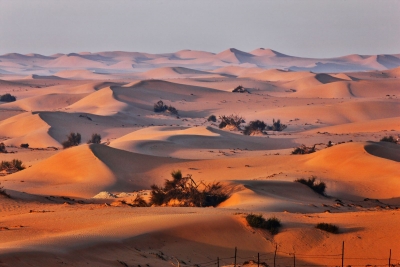
A pile of sand exposed to wind or water flow forms a dune shape and starts moving downstream along with the flow. Be it in deserts, river bottoms or sea beds, dunes always appear in groups, often forming prominent patterns.
While it is well established that dunes migrate, it hasn’t been completely understood if and how dunes within a group interact with each other. There have been a number of theories to try and explain this. One suggests a snowballing technique where duns keep colliding and exchanging mass until they achieve a certain condition. These theories, however, have to be validated, either through experiments, or by observing it in nature.
Earlier this year, scientists from the University of Cambridge came up with an alternative theory. They found that sand dunes were able to ‘communicate’ with one another, interacting and repelling their neighbours even as they moved.
They came to this conclusion by using an experimental dune racetrack. While water-filled flumes artificial channel conveying water) have been common tools in study the movement of sand dunes in a lab setting, scientists in this experiment built a circular flume to study the dunes for hours at a time.
Even though this set-up was implemented to speed up the data collection process, they quickly realised that dunes were interacting with each other with time. Having started with two identical dunes, they noticed that the front dune affected the properties of the second dune. As the experiment went on the two dunes went further apart, until they achieved equilibrium on opposite ends of the circular flume.
These are still early days and there are plenty of steps still left to understand examples dune migration. Clusters of dunes would have to be observed for long periods of time through satellite imagery or other means to produce evidence. As long-term dune migration increases desertification, threatens shipping channels and can even bury infrastructure, they are bound to be researched further in the future.
Picture Credit : Google




